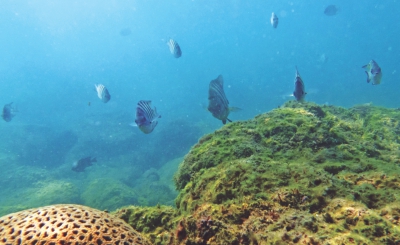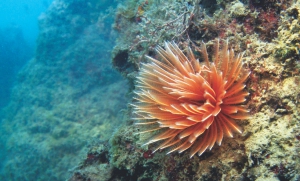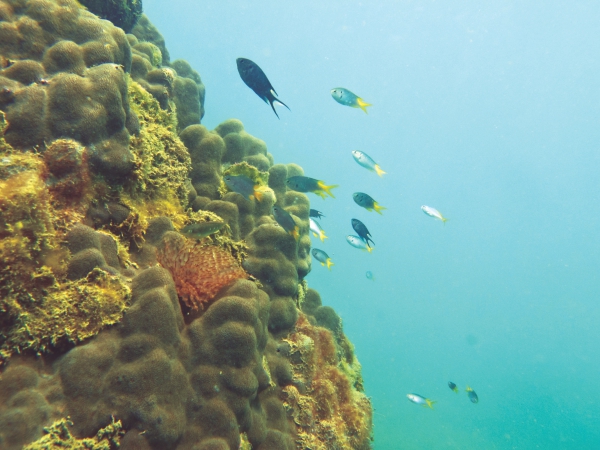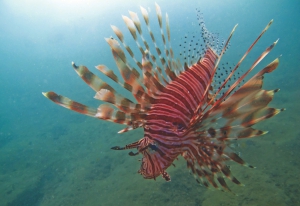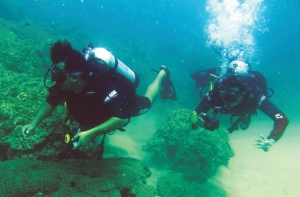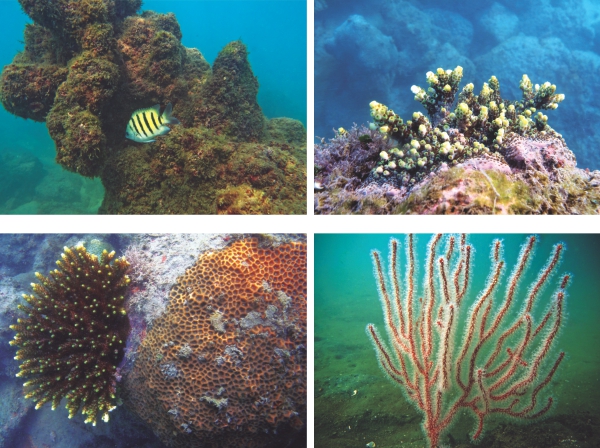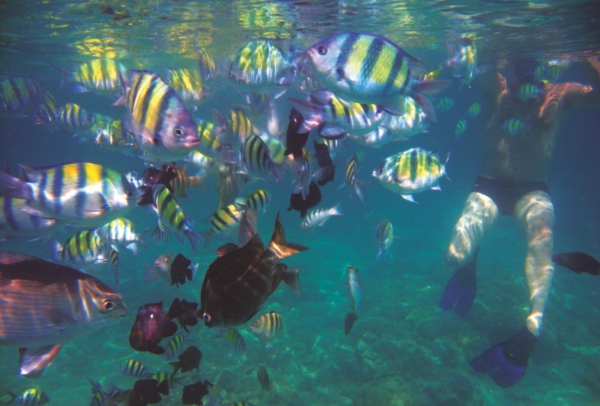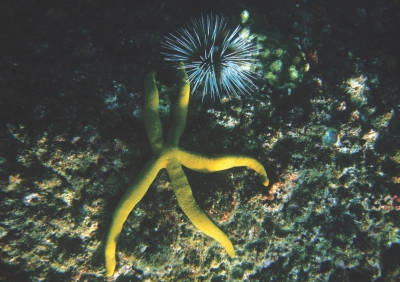| Home - Back Issues - The Team - Contact Us |
 |
| Volume 12 |Issue 07| February 15, 2013 | |
|
|
Profile EXPLORING THE ULTRAMARINE Zahir Hassan Nabil
It was the blue and green images of marine life on television that photographer Sharif Sarwar loved to stare at in childlike wonder for hours. By the time the photojournalist, in his early 40s, took a break from his 14-year career in 2009, he knew his heart coveted to explore the mysterious, breathtaking world beneath the sea. He was so engrossed in the marvels of National Geographic or Discovery Channel that he finally made up his mind for his own underwater expedition.
Needless to say, the task was not easy. Sarwar came to learn that snorkelling or floating facing the water surface can be an easy way to observe the underwater landscape but in order to capture what he had seen on the television screen, he needed to go beyond– to acquire the daunting skill of scuba diving. He browsed through the internet to gather information on how he could do it, the costs appeared to be intimidating. Nevertheless he managed to buy a Canon G12 camera, from his savings while its underwater casing had to be borrowed from a friend. Sarwar befriended Atiqur Rahman of Oceanic Scuba Diving who provided him with basic training, the swimsuits and underwater breathing gear. Another experienced diver, Halim shadowed him as a guide to his first venture near the St. Martin's island in early 2012. A boat took them off the island to a coral spot near Chera Dwip in the south. Sitting on the brink of the boat, Sarwar mustered all his courage and delved into the undiscovered.
How did you feel? “I could feel my eardrums crushing in pressure as we were going under. It was one of those moments when the only thing you know is your heart throbbing in the fear of the unknown,” shares Sarwar. As they were navigating their way down, a swarm of flamboyant fishes briskly showed up and swam off frenziedly sensing intrusion, rather comforting Sarwar back to consciousness that he was still alive. Sarwar's dreams slowly began to emerge in the form of vibrant imagery; corals of various hues and shades, startling fish and translucent creatures through the lens of the blue seawater. It was a hidden valley beneath the waves that snatched all the colours from the rainbow and distributed within itself with utmost generosity. Sarwar explored the seabed for eight more days. Each dive cost him three thousand taka but nothing would deter him from the fascinating adventure he had begun all by himself, without any sponsor. He was fixated on the world beneath, he couldn't make up his mind on what was more beautiful, what to shoot first. “Besides, this was the first time I had dived as deep as 45 feet, I had to keep an eye on the metre showing approximately 60 minutes' air-reserve on my back,” he says.
Sarwar also bears witness to the wounds of the underwater, “Many do not know that corals are living beings, fish swarms take shelter in and around the corals to spawn (eggs). But most of the beautiful corals that I shot were half dead.” Sarwar also shares that the influx of tourist ships has been causing the gravest damage as turbines of huge ships and engine-driven boats stir up sediment from the seabed which then settles as silt shells atop the corals.” Anchoring and hauling huge fishing nets take apart the corals straightaway. Fishermen who can hold their breath for two-three minutes under water also collect beautiful corals to sell at high prices to the tourists.
The pilfering of corals and damage under water have also been brought to attention in The Daily Star in October last year when a biodiversity expert of International Union for Conservation of Nature (IUCN) dived as deep as 22 feet only to witness similar devastation near the St. Martin's. Apart from ocean acidification and rise in sea temperature, the report clearly specified unplanned tourism as a threat to the marine life. Sarwar's exploration further beneath reaffirmed the causes for concern. “It was really heartbreaking; it seems no one cares about the sea. I don't know whether there is a law to protect unplanned tourism or a regulation to reroute seafaring vehicles,” he says. Atiqur Rahman of Oceanic Scuba Diving informed over the phone that the island is like a helpless orphan, these days no tourists go home without a token, usually a precious piece of coral, from the island. He adds, “The enforcement agents there probably have no idea of what to conserve, the island is completely left alone to the whims and desires of the tourists.” If the tourist ships keep mooring around the island and some inane tourists keep taking away bits and pieces from the underwater treasures for their living room showcases, the corals will soon be history, along with the sea life revolving around. In the middle of last year, Sarwar's photographs were lauded in a city exhibition and elsewhere but he remained unsatisfied with his work. He had to reach the professional degree of scuba diving. By the end of last year, fearless Sarwar travelled to Phuket, Thailand to dive 66 feet deep into the Andaman Sea, 80 kilometres off the bay, under the supervision of professional scuba divers. At the expense of another 17 thousand Thai baht, the training also covered the essentials of scuba diving and marine life, for instance what should be done if a bloodthirsty shark says hello in the deep. Sarwar shows the license in satisfaction, “I am allowed to have a guided dive in any sea anywhere in the world now.” He also observed how the marine life in the Andaman was kept heavily guarded from damage, “The first rule is not to touch or take anything from the ocean floor; you are only allowed to observe the beauty. The coral spots are all mapped out and kept under constant watch so that seafaring vehicles don't navigate above those areas. Fishing is completely prohibited anywhere near the coral spots,” he explains.
Returning from Thailand, Sarwar ventured to the St. Martin's yet again for a continuous diving spree of 20 days. Having gained considerable professional expertise this time, Sarwar roved the ocean floor all around the island and captured the unseen underwater magic in exquisite detail. “God willing, underwater photography will be my first priority but I wish more people were interested in this. We could go together then. You cannot really describe what you see, that's why the pictures,” says a smiling Sarwar.
Copyright
(R) thedailystar.net 2013 |
||||||||||||||||||||||||||||||
